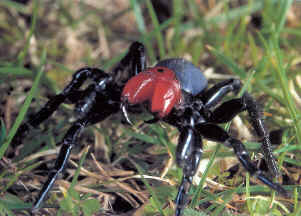Ant
Ants are social insects that are related to wasps and bees. Although it may not look like a bee or a wasp, it actually evolved from a wasp-like ancestor during the mid-Cretaceous period which was 110 to 130 million years ago. It then began to diversify after flowering plants emerged. There are 12,500 ant species currently classified out of 22,000 at present.
Ants can be found on almost every landmass on Earth. Places where ants are not found include Antarctica, and a few remote and/or inhospitable islands such as Iceland, Greenland, and some parts of Polynesia and the Hawaiian Islands which do not have native ant species. They can thrive in a wide range of ecosystems, and is thought to form at least 15 to 20% (25% in the tropics) of the total terrestrial biomass – this exceeds the total terrestrial animal biomass of vertebrates. As a result, they are ecologically dominant. The reason for their success is that their social organisation, ability to adapt to different habitats, tap a wide range of food resources, as well as defend themselves. They have a long co-evolution that has led to mutualistic, parasitic, commensal, and mimetic relationships. Most ants are omnivorous, but some ants are specialist feeders.
Ants are quite small, and range from 0.75 mm – 52 mm. They can vary in colour, but almost all ants are black or red. Some species are green or metallic.
Ants form colonies that can range from a few dozen predatory individuals living in natural cavities, to highly organised colonies that occupy large territories and consist of millions of ants. These larger colonies will have sterile wingless females that form casts of ‘soldiers’, ‘workers’ and other specialised groups. Almost all ants have fertile males called drones, as well as one or more fertile females called queens. These colonies are described as superorganisms sometimes as the ants appear to work as a unified body, working together to support the colony.
These societies with labour divisions, communication skills, and the ability to solve complex problems are similar to human society. As a result, ant colonies have been an inspiration to many.
In human culture, people use ants in medication, cuisine, and rituals. Some ant species are also valued as a biological pest control agent. However, as they have the ability to exploit resources, ants do have conflict with humans as they can invade buildings and damage crops. Some species such as the red imported fire ant are an invasive species and can establish themselves in areas where they are accidentally introduced.




